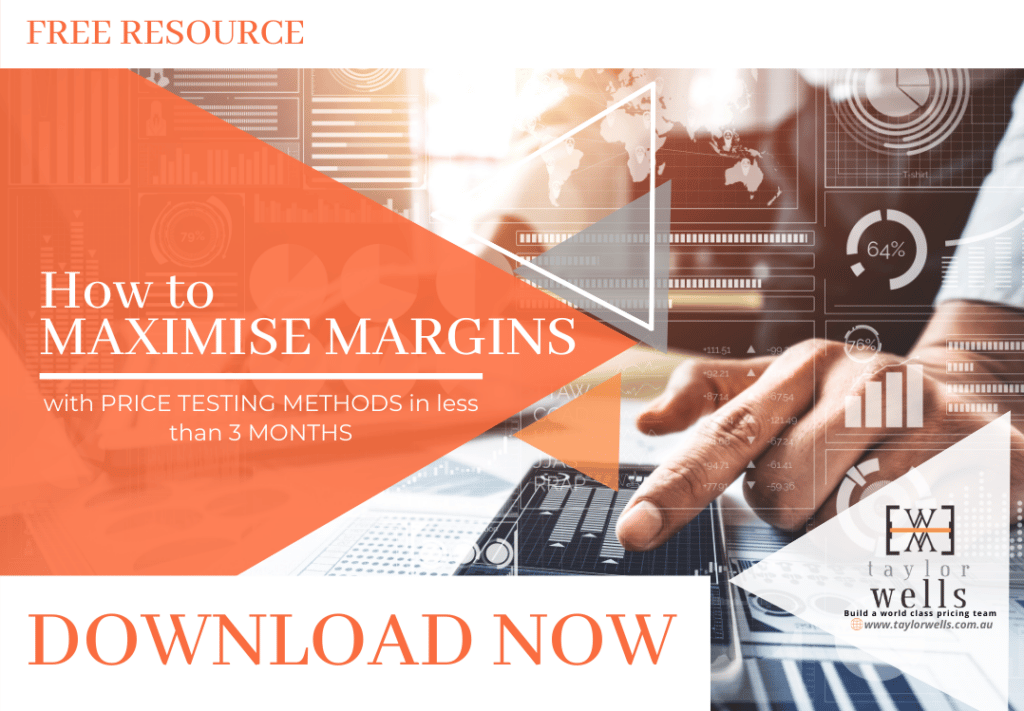
How To Shift Your Approaches To Pricing Services For Maximum Profit
As traditional market formats change, businesses begin to struggle with their approaches to pricing services or Equipment as a Service. This is especially true for business-to-business or B2B companies, which has seen technological advancements completely rewrite standards. Moving from traditional product pricing to SaaS and EaaS models.
>Download Now: Free PDF How to Maximise Margins with Price Trials
The old methods of conducting a sale for B2B tech companies used to revolve around the signing of contracts and payment. B2B sales teams and clients had little interaction throughout the duration of their contracts, which lasts several years. For innovative technology, this model can prove to be unprofitable. This is because the previous pricing methods worked for selling technology as a product, rather than a service.
These days, most companies are shifting from the product selling mindset to a service selling mindset. We know this as software-as-a-service or SaaS. In this article, we’ll be talking about how you can shift your businesses approach to pricing services using this model.
Approaches To Pricing Services – Reshifting Focus From Products To Services
Many new technologies don’t fit traditional sales structures. The old format of B2B selling software involved a simple sale and contract. However, this is no longer viable. Traditional structures expected bigger companies to be headed by bigger teams. These teams typically received the most resources.
However, with software these days, powerhouse companies no longer need to employ tens of thousands of people to keep themselves running. Software and technology including cloud storage have shifted towards a service approach, otherwise known as software-as-a-service or Saas.
What is SaaS?
SaaS is a business model that offers the same resources as bigger enterprises. Instead of selling the software as a product, it is sold as a service. This allows companies to adopt approaches to pricing services similar to those of utilities.
The SaaS model charges users based on consumption – like your electricity or water bill. In other words, SaaS allows a software service to be accessed through the internet in exchange for a fee, like a monthly subscription.
Vendors maintain and host the servers and databases, taking the responsibility away from customers. Some prominent examples you have probably encountered include Netflix, Dropbox, Slack, and Microsoft.
Effectively Shifting to SaaS – Approaches To Pricing Services
To shift your business model effectively to SaaS, you’ll need to understand if your product or service fits the category in the first place. SaaS goes beyond a simple subscription strategy. Software programs that fall under Saas are purely web-based. For example, Adobe Creative Cloud is not entirely a SaaS service, since they still require the app to be purchased and downloaded into your computer.
Managers and sales teams also need to be ready to shift by reevaluating their metrics. Determine how big your company is, how many employees you have, and how big your target clients are.
Sales Flow
Making the shift to SaaS also has major implications on your sales flow. In fact, it could completely change it. A traditional sales flow begins with the generation of leads that salespeople can chase. Salespeople then contact their leads and explain or demonstrate their product. If the client decides they want it, they close the deal.
This changes quite a bit for SaaS businesses since you would be operating under a consumption-based model rather than a flat price. If the client uses your product at high volumes, you will generate more profit.
Consumption-based approaches to pricing services have the unique quality of shifting importance to customer success. The traditional sales approach favours large volumes of sales or clients. With SaaS, you want to ensure your client’s success in using your product, to generate more revenue over time.
Implications For Sales Teams
What this means for sales teams is that your interaction with customers doesn’t end after they decide to purchase your software. In effect, salespeople become something of a consultant to the buyer.
Building long-lasting and strong relationships with customers becomes the forefront of the sales process. Make sure to hire competent salespeople and engineers. This will ensure that your customers are provided top-tier support.
Before you go thinking that this is all a pain in the neck for sales teams, consider the fact that these relationships will allow you to gain deeper insight into your customers. This gives you valuable data for improvement and feedback for your product/service, allowing you to stay on top of updates or trends in the market.
What Sales Managers Need To Reevaluate – Approaches To Pricing Services
Before making a complete shift to this business model, sales managers will need to create the right structure. This will require a series of reevaluations throughout the business:
Your Hiring Process
The first step is to reevaluate your hiring process. Previously, engineers were primarily internal employees. However, as we’ve discussed above, the SaaS model will require both your sales teams and engineers to interact with customers in order to provide quality support.
This means that besides hiring engineers that are technically skilled, they will also need to be emotionally intelligent and perceive what customers require. Likewise, salespeople not only need to be engaging and outgoing but they must understand the technical jargon required to assist customers.
In other words, you’ll be looking to cultivate a group of employees who have the right blend of skills across departments.
Your Training Process
Reevaluating your training process follows naturally as you begin to hire employees that need wider skillsets. Training for sales teams should not only include the ability to demonstrate and sell products to customers, but also a capacity to think critically and creatively problem-solve in case customers encounter problems. Managers will need to be hands-on throughout the process.
Your Sales Team Culture
The culture among teams utilising SaaS business models will have to veer towards growth and dynamic learning. No one should feel superior or inferior, since everyone in cross-functioning departments will have to be learning from each other.
〉〉〉 Get Your FREE Pricing Audit 〉〉〉
Bottomline
In conclusion, transitioning from traditional product structures to a service-oriented SaaS business model can be a lot to deal with. However, the overall benefits, especially long-term, will outweigh the initial hassle.
Shifting to SaaS will enable you to maximise your profits, build stronger relationships with your clients, and use the insights learned from them to innovate further into the future.
For a comprehensive view on building a great pricing team to prevent loss in revenue,
Download a complimentary whitepaper on How to Build Hiring Capability To Get The Best Pricing Team.
Are you a business in need of help to align your pricing strategy, people, and operations to deliver an immediate impact on profit?
If so, please call (+61) 2 9000 1115.
You can also email us at team@taylorwells.com.au if you have any further questions.
Make your pricing world class!
Related Posts
Leave a Reply Cancel reply
Categories
- marketing strategy (26)
- Organisational Design (14)
- Podcast (114)
- Pricing Capability (87)
- Pricing Career Advice (10)
- Pricing Recruitment (19)
- Pricing Strategy (287)
- Pricing Team Skills (13)
- Pricing Teams & Culture (24)
- Pricing Transformation (47)
- Revenue Model (25)
- Sales Effectiveness (27)
- Talent Management (7)
- Technical Pricing Skills (35)







